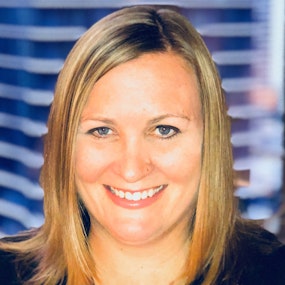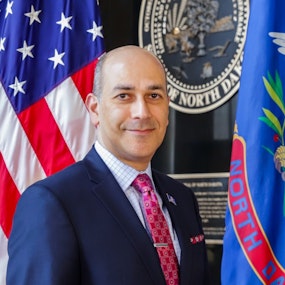ROBERT JOHNSON:
This is the award-winning Public Health Review Morning Edition for Tuesday, February 20, 2024. I'm Robert Johnson. Now, today's news from the Association of State and Territorial Health Officials.
NIZAR WEHBI:
We are at the time where we have a severe healthcare workforce shortage and rural areas have more severe of a shortage compared to urban areas.
JOHNSON:
North Dakota has a plan to attract health care workers. This is State Health officer and ASCO member Dr. Nizar Wehbi.
WEHBI:
The 'Love You to Stay' program or campaign is launched by North Dakota in an effort to help recruit and retain qualified healthcare professionals as well as healthcare workforce overall, to increase access to care in the state, especially in rural areas.
JOHNSON:
Wehbi says the plan includes repayment of student loans, adding the program already has invested more than $2 million to assist eligible individuals.
WEHBI:
We know that it is an important aspect that weighs on our health care professionals, the loan issue, because on average, a primary care physician has about $200,000 in loans, and a nurse practitioner, for example, has $150,000 in loans. So, providing these loan repayment programs will be very attractive and is a great incentive for healthcare providers and healthcare professionals to go and work and practice in these rural areas and where there is a need. W
JOHNSON:
Wehbi says any campaign also must communicate the benefits of working and living in rural areas.
WEHBI:
Healthcare providers and healthcare professionals are looking for ways where they can be part of a community where they can have an impact on their communities. And many times if we present the value of working and practicing in a rural health setting that many times matches the goal and the aspiration that many healthcare providers are looking forward to.
JOHNSON:
You can visit the state's campaign website and read a story about the program using the links in the show notes.
Pacific Island area public health leaders are working on plans to invest their Public Health Infrastructure Grant funding. ASTHO Vice President Lindsey Myers says a recent meeting included officials from the U.S. Territories and Freely Associated States along with the PHIG partners: ASTHO, the Public Health Accreditation Board, and the National Network of Public Health Institutes.
LINDSEY MYERS:
So, it's really an opportunity to enhance knowledge-sharing, improve regional situational awareness, and build a deeper connection among the Pacific Island PHIG recipients and those of us who are providing technical assistance.
JOHNSON:
Myers says the agenda included discussions on workforce trauma-responsive leadership, foundational capabilities, and data systems modernization.
MYERS:
Participants also had a chance to work in jurisdictional teams and developed Islands-specific plans for moving their public health infrastructure work forward. And along with that, identifying the technical assistance needs that they need from partners like ASTHO, and NNPHI, and PHAB.
JOHNSON:
The gathering is expected to be the first of several meetings to provide Pacific Island partners with the help they need to improve public health in their communities.
MYERS:
We intend to follow up with each of them individually and tailor our technical assistance to their specific goals and objectives that they have at this particular time. And know that this is a four-year journey that we have left on the big project and hope to continue to do this on an annual basis so we can connect and continue to support their efforts.
JOHNSON:
Also, today, preparedness teams will want to make time for a webinar this afternoon. Learn what to do during the first three days after a nuclear detonation. An official with the U.S. Department of Homeland Security will discuss new guidance. The event begins at 3 p.m. ET today. Sign up using the link in the show notes.
Finally, this morning, another webinar, this one on Thursday, will explain how to implement a performance management system within an environmental health division. Get more information by clicking the link in the show notes.
Before we go, a reminder also to follow this newscast on your podcast player and connect with ASTHO on social media. We are on LinkedIn, Twitter, and Facebook.
That'll do it for today. We're back tomorrow morning with more ASTHO news and information. I'm Robert Johnson. You're listening to the award-winning Public Health Review Morning Edition. Have a great day.






